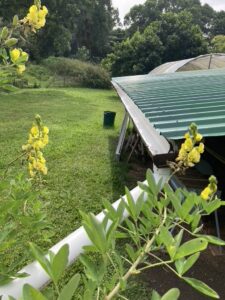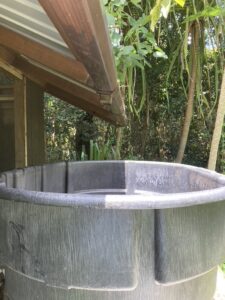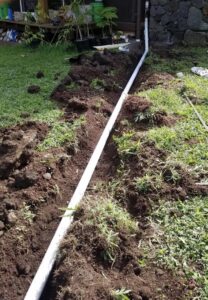We are halfway into the microgrant period and wanted to give you a quick update on how grant activities are proceeding. We got an early great start when a local reputable beekeeper informed us that sheʻll no longer be able to take care of two of her established colonies. Rather than spend money on new supplies and commit labor to build the two colony boxes we proposed, we decided to purchase the two colonies. The top bar boxes were built by another friend in the neighborhood, with ground-contact-treated wooden legs, so they should do fine out in the open (with individual roof panels) until our bamboo bee shelter can be constructed. Transport of the colonies went off without a hitch, so Diga has been keeping the bees and harvesting honey much earlier in the grant period than we anticipated!
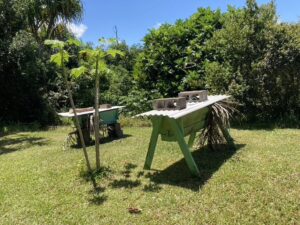

This month, Michael has been putting a good amount of time into building the dehydrator. Itʻs principle is similar to the SunWorks 4-shelf design he built earlier in the year, in which fresh air is passively drawn across a metal medium that transfers heat to the air before it passes through the food. This one is called the Appalachian, and is designed to have a dozen or so shelves in a darkened vertical box through which the air from the solar collector (lower) passes. You can read about it here and here. You can learn about the SunWorks and about the Maui by tracking down the excellent book listed at this web archive.
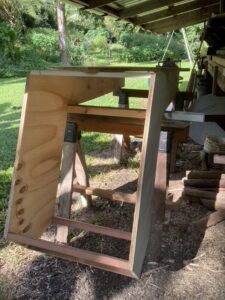
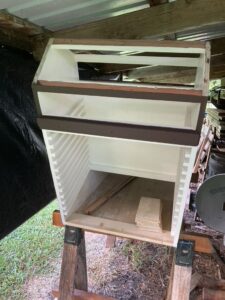
In terms of the integrated duck/aquaponics proposal, weʻve begun experimenting with designing a net to harvest the tilapia, have created garden beds (which radiate from the pond, wicking water from the beds), and have been harvesting greens from the pond area to feed to the tilapia. Bele (edible hibiscus) is their favorite! Weʻve also ordered the pond liner which weʻll use to build the duck pond, and have begun the water conduit work to deliver rainwater catchment surplus water to the gravity-fed train of descending elements: duck pond, stream-pond, settling tanks, and finally tilapia pond.
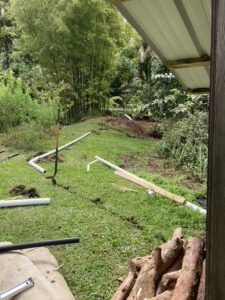
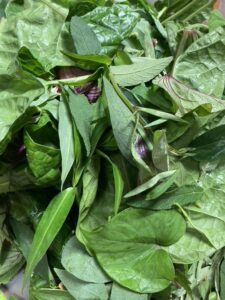
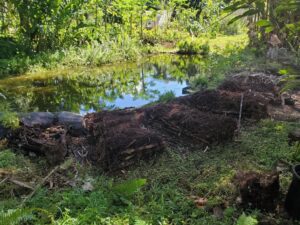
In terms of water storage and taro patches, we have been making significant progress. Weʻve established gray-water systems for two structures, burying conduit and planting taro and BBTV-resistant (Banana Bunchy Top Virus) Namwa banana keiki into those areas. Weʻve also been working on gutters and catchment tanks at the garden shed and the Girlsʻ Cabin. All of this water harvesting work is important and vital to maximize passive flow to moisture loving plants.
